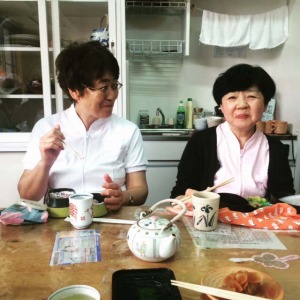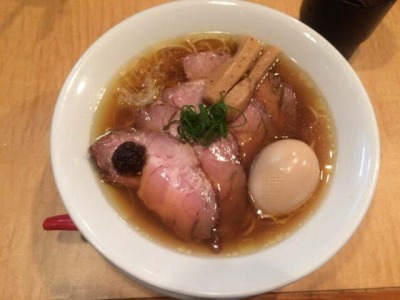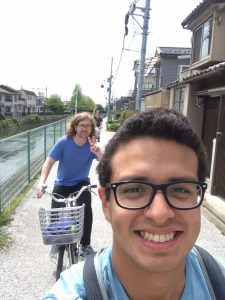Clinical Exchange in Japan
Welcome to Japan and Nagoya University school of Medicine!
Experience Report
Thomas Santamaría from Tulane University
Period:2016/4/4-2016/4/28
Department: Cardiology
I have only seen a microscopic part of Japanese culture and can barely interact with people due to language barriers, but definitely became intrigued with the intricacies of country. I know that my short month here will only provide a glimpse of the medical system in Japan, much less the ways of the daily life. Regardless, I have learned in and out of the clinical setting since I got to Japan.
My favorite clinical experiences thus far have been the outpatient ones, naturally this comes to no surprise since I will be starting a family medicine residency on arrival to the United States. Even though I didn’t understand what was said most of the time, I was able to see the international language of a family doctor talking super pass my language barrier. The great care for the patient is evidently seen in the physician’s diligences to uninterruptedly listen to all of the patient’s problems. This experience was amplified a hundredfold when I accompanied physicians on there home visits. I was able to step into a world only privileged to friend and family, but against all odds, I was able to experience it as a foreigner. I am grateful for this. Seeing patients in their natural setting helps me understand people’s everyday life, and appreciated the culture more. I was able to see traditional Japanese homes and hear personal stories about their beautiful gardens.
Another unforgettable experience was seeing the picturesque rural clinic in Nakatsugawa. The day there was filled with activities, but two stand out and will remember forever. The first is having the opportunity to sing for the patients in the nursing home; I know I am a terrible singer, but it was a fun and I think they enjoyed seeing me embarrass myself. Secondly, I loved eating our Bento Box with the nursing staff as they warmly welcomed me to their table for some friendly conversations.
Unlike medicine in the United States, Japanese doctors have welcomed the use of alternative medicine for the longitudinal care of the ones they care for. I found this fascinating, as I have never had any training in holistic, homeopathic or eastern medicine. I wish to have more opportunities to explore the curative properties of these fields in the future so that I can eventually use them for benefit of my patients.
I spend the second half of the month in Anesthesia. It was a truly amazing experience to see how anesthesia in Japan does a thorough job in controlling pain without the need of opioids. Anesthesiologists in Japan are a great doing peripheral nerve blocks to ease pain during the postoperative time periods and in the outpatient clinics. This is very valuable information for me as I will deal with many patients with chronic pain back home, and unfortunately, we have a substance abuse epidemic. Understanding pain and how to ease it with methods other than opioids is very important and should be shared globally, thus I will be bringing this knowledge back home. Like in family medicine, the anesthesia department welcomed me and included me in to their tight schedules.
Like I said, one month in Japan is definitely not enough. However, I am grateful to have been able to get an introduction to Japanese culture through the lens of medicine. I am thankful for everyone that welcomed me in his or her conversations.


left: Lunch with a few great nurses in Nakatsugawa, Japan.
right: Amazing Ramen in Tsuta Ramen in Tokyo! First time eating at a Michelin Star Restaurant.

Biking with friends in Kyoto.
Click here to read other stories
Nagoya University Graduate School of Medicine